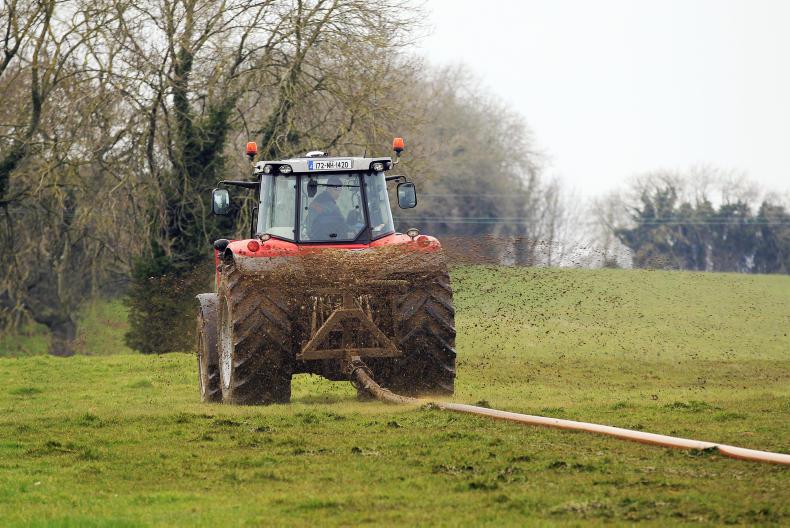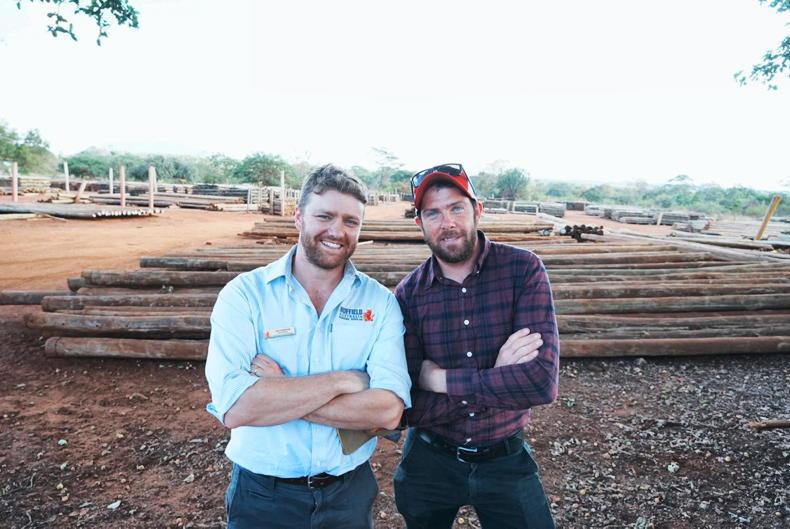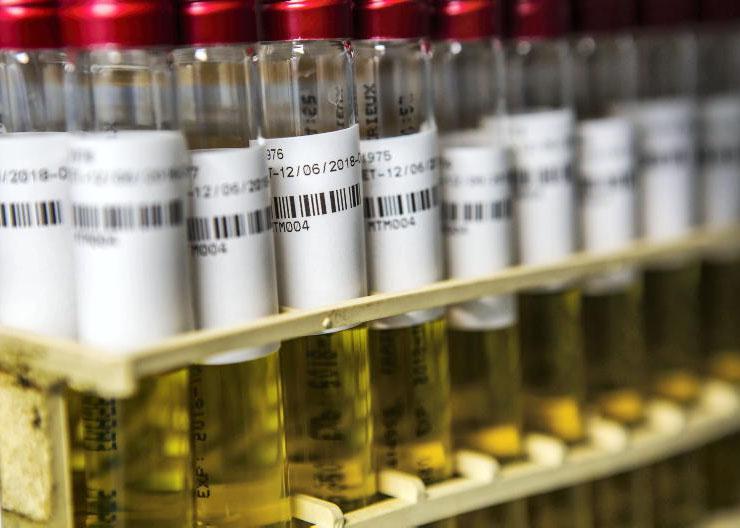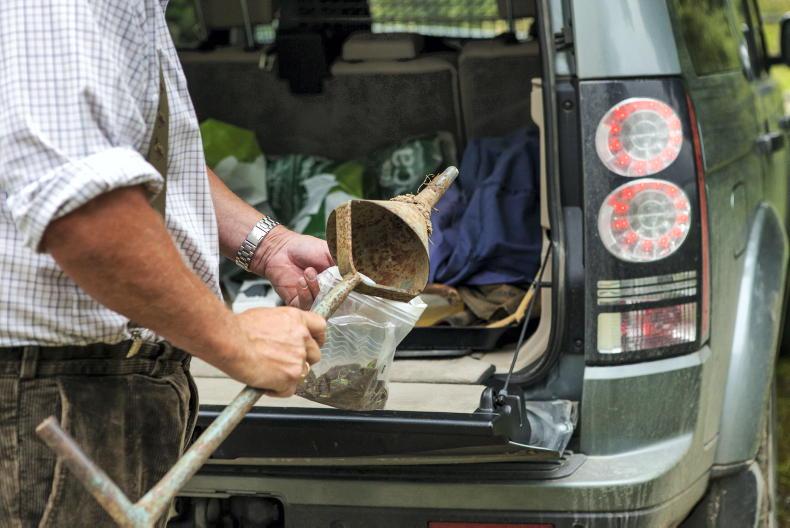Further restrictions on the closed period for applying slurry, and a ban on splash-plate spreading by contractors and some farmers, are part of proposed new rules that were published by DAERA on Wednesday.
The proposals were set out in a consultation document on the new Nutrient Action Plan (NAP), which is to replace the existing Nitrates Action Programme (and associated phosphorus regulations) before the UK leaves the EU at the end of March.
The proposals include reducing the maximum slurry application rate during October and February from 50m³ to 30m³ per hectare, and increasing the buffer zone from 10m to 15m for waterways and from 20m to 30m for lakes during the same two-month period.
DAERA also wants to make it compulsory for all agricultural contractors in NI to spread slurry with low-emission slurry-spreading equipment from February 2021, as well as all farms with over 100 livestock units or more by February 2022.
Low-emission equipment includes trailing shoes or hoses, dribble bars and soil injection. The proposals include rolling this out initially to spreading of anaerobic digestate from February 2020.
DAERA estimates that 3,400 farms in NI have over 100 livestock units and will be affected by the proposed splash-plate ban in 2022. Sloping fields or ground with limited access can be made exempt from the low-emission spreading requirement, however the consultation states that exemptions “will be rare” and will only be available on application to the NI Environment Agency.
Fertilisers
Under the proposed NAP, from January 2020, spreading chemical urea fertilisers will be banned unless the product is treated with inhibitors to reduce ammonia emissions.
As expected, the new NAP includes a requirement under cross-compliance rules to demonstrate crop need through a recent soil test when applying chemical fertilisers containing phosphorus (P).
Under the proposals, from January 2020 all farmers that apply chemical P fertilisers and P-rich manures (anaerobic digestate and some pig and poultry manures) will need to complete a fertilisation plan.
These plans are currently required for anyone operating under a nitrates derogation, which allows them to increase their manure nitrogen spreading limit from 170kg/ha to 250kg/ha.
Excretion
The NAP consultation also proposes changing the nitrogen excretion rate for livestock, which effectively would mean more dairy farms would be required to operate under a derogation.
At present, a dairy cow has an annual excretion value of 91kg of nitrogen, but from January 2020 this is proposed to change to 85kg for herds with an annual average yield below 6,000l, increase to 100kg for up to 8,500l and 116kg for herds yielding over 8,500l.
Nitrogen excretions rates will change for other livestock also, but proposed new rates are slightly lower than current levels for young dairy stock as well as all beef-bred cattle.
Waterways
Other measures in the proposed NAP include a requirement to have feeding troughs over 20m from waterways by 2020 and drinkers at least 10m from waterways by 2022.
All new slurry stores will need to be covered from 2020 and existing stores will need floating or fixed covers by 2022. Stricter rules will also apply for records of anaerobic digestate exports under the proposals.
Additional
The proposed NAP essentially retains all requirements from the previous regulations and adds additional rules which aim to improve water quality in NI, as well as reduce ammonia emissions to the atmosphere.
The main water quality issue in NI remains phosphorus levels, with the DAERA document stating that figures for 2018 indicate that 7.8% of water bodies are declining in their status for phosphorus.
The public consultation document on the new NAP is available on the DAERA website and is open to responses until 4pm on 19 March.
Read more
Crackdown on P fertiliser in 2019
Review of slurry rules ongoing in DAERA
Further restrictions on the closed period for applying slurry, and a ban on splash-plate spreading by contractors and some farmers, are part of proposed new rules that were published by DAERA on Wednesday.
The proposals were set out in a consultation document on the new Nutrient Action Plan (NAP), which is to replace the existing Nitrates Action Programme (and associated phosphorus regulations) before the UK leaves the EU at the end of March.
The proposals include reducing the maximum slurry application rate during October and February from 50m³ to 30m³ per hectare, and increasing the buffer zone from 10m to 15m for waterways and from 20m to 30m for lakes during the same two-month period.
DAERA also wants to make it compulsory for all agricultural contractors in NI to spread slurry with low-emission slurry-spreading equipment from February 2021, as well as all farms with over 100 livestock units or more by February 2022.
Low-emission equipment includes trailing shoes or hoses, dribble bars and soil injection. The proposals include rolling this out initially to spreading of anaerobic digestate from February 2020.
DAERA estimates that 3,400 farms in NI have over 100 livestock units and will be affected by the proposed splash-plate ban in 2022. Sloping fields or ground with limited access can be made exempt from the low-emission spreading requirement, however the consultation states that exemptions “will be rare” and will only be available on application to the NI Environment Agency.
Fertilisers
Under the proposed NAP, from January 2020, spreading chemical urea fertilisers will be banned unless the product is treated with inhibitors to reduce ammonia emissions.
As expected, the new NAP includes a requirement under cross-compliance rules to demonstrate crop need through a recent soil test when applying chemical fertilisers containing phosphorus (P).
Under the proposals, from January 2020 all farmers that apply chemical P fertilisers and P-rich manures (anaerobic digestate and some pig and poultry manures) will need to complete a fertilisation plan.
These plans are currently required for anyone operating under a nitrates derogation, which allows them to increase their manure nitrogen spreading limit from 170kg/ha to 250kg/ha.
Excretion
The NAP consultation also proposes changing the nitrogen excretion rate for livestock, which effectively would mean more dairy farms would be required to operate under a derogation.
At present, a dairy cow has an annual excretion value of 91kg of nitrogen, but from January 2020 this is proposed to change to 85kg for herds with an annual average yield below 6,000l, increase to 100kg for up to 8,500l and 116kg for herds yielding over 8,500l.
Nitrogen excretions rates will change for other livestock also, but proposed new rates are slightly lower than current levels for young dairy stock as well as all beef-bred cattle.
Waterways
Other measures in the proposed NAP include a requirement to have feeding troughs over 20m from waterways by 2020 and drinkers at least 10m from waterways by 2022.
All new slurry stores will need to be covered from 2020 and existing stores will need floating or fixed covers by 2022. Stricter rules will also apply for records of anaerobic digestate exports under the proposals.
Additional
The proposed NAP essentially retains all requirements from the previous regulations and adds additional rules which aim to improve water quality in NI, as well as reduce ammonia emissions to the atmosphere.
The main water quality issue in NI remains phosphorus levels, with the DAERA document stating that figures for 2018 indicate that 7.8% of water bodies are declining in their status for phosphorus.
The public consultation document on the new NAP is available on the DAERA website and is open to responses until 4pm on 19 March.
Read more
Crackdown on P fertiliser in 2019
Review of slurry rules ongoing in DAERA










SHARING OPTIONS